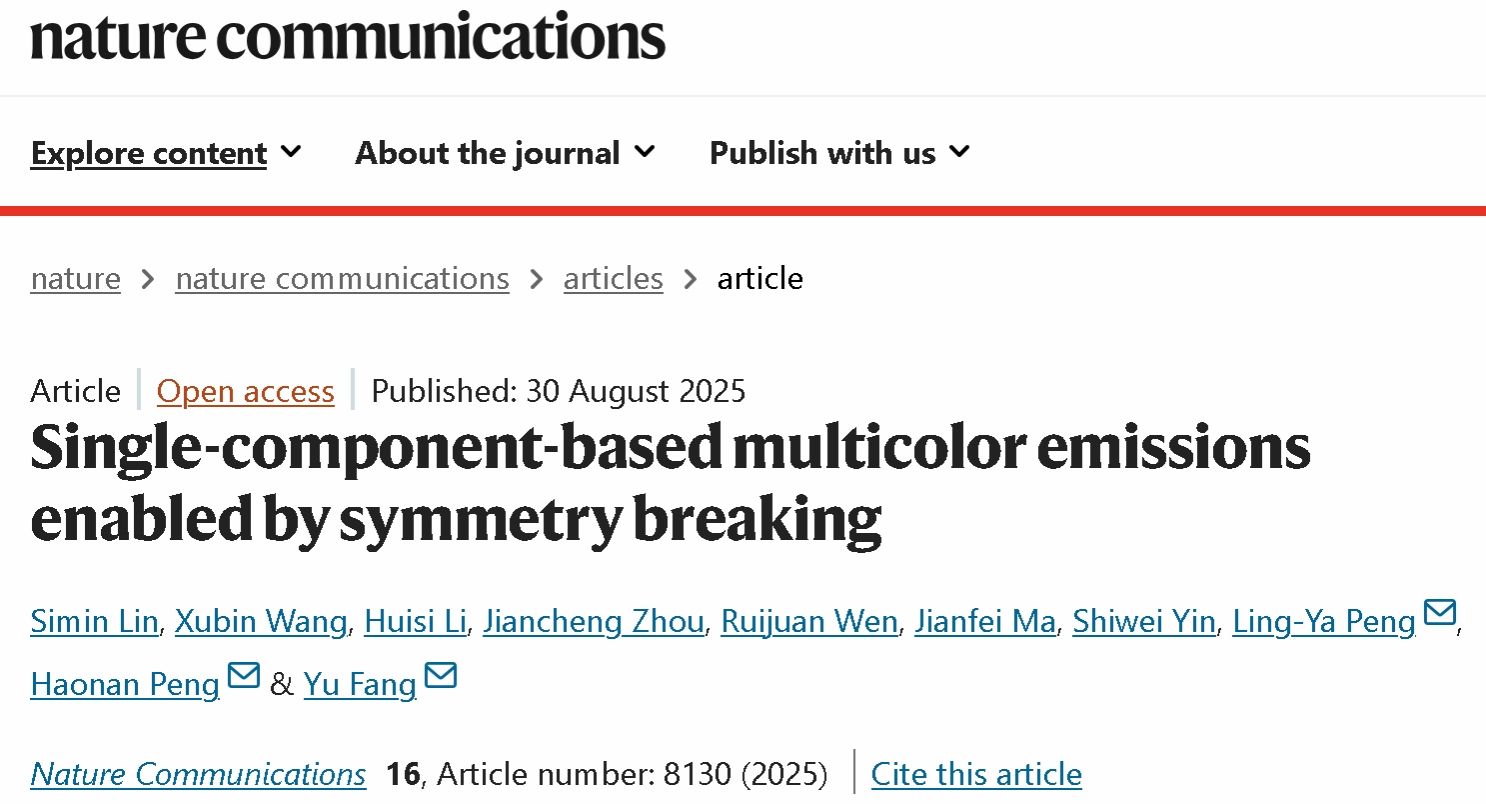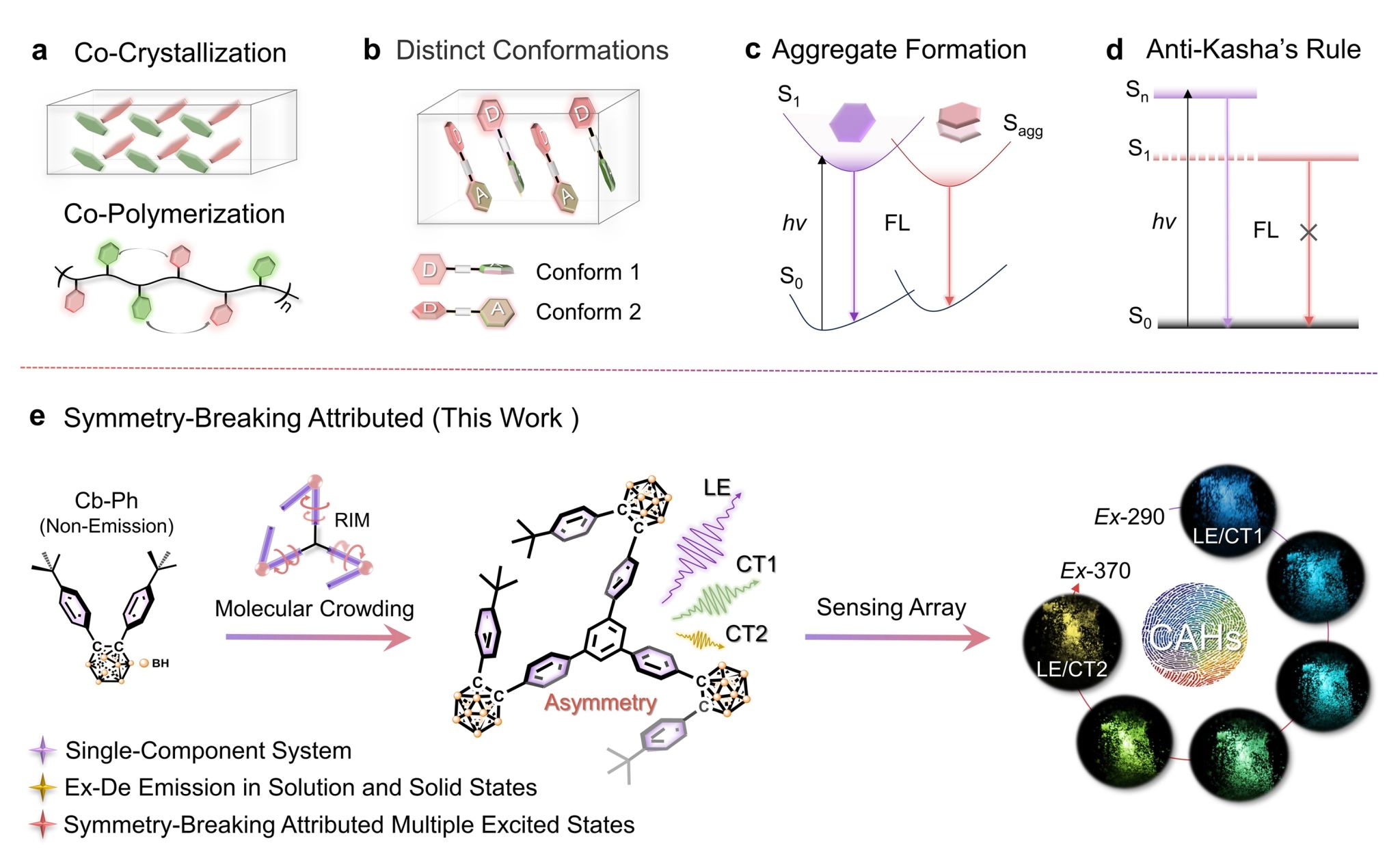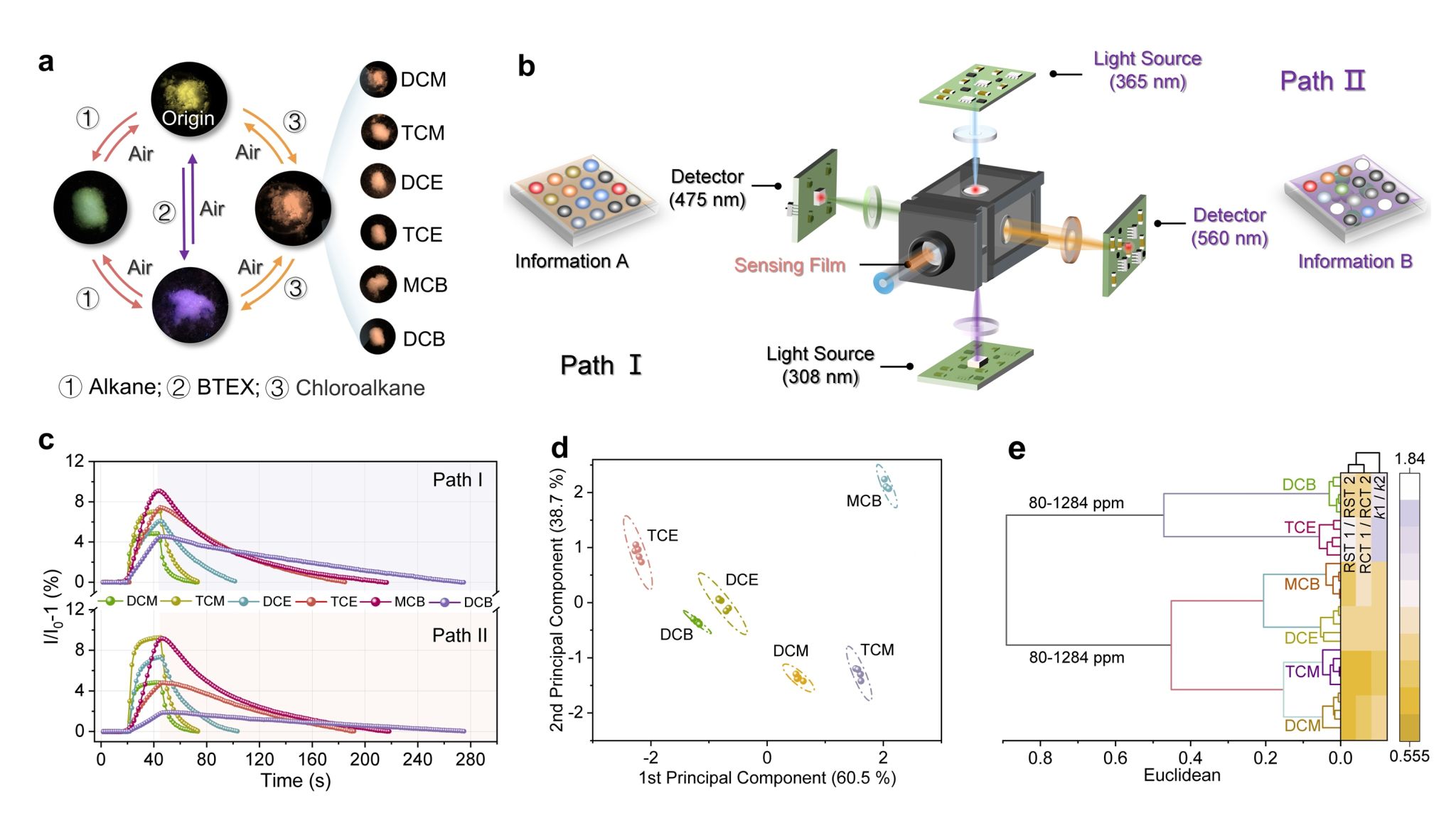
Simin Lin, Xubin Wang, Huisi Li, Jiancheng Zhou, Ruijuan Wen, Jianfei Ma, Shiwei Yin, Ling-Ya Peng, Haonan Peng, Yu Fang. Nat. Commun. 16, 8130 (2025). DOI: 10.1038/s41467-025-63519-7

Fig. 1. Representative strategies for excitation-dependent multicolor emissions. a–d Schematic diagram of the reported strategies for excitation-dependence (Ex-de) multi-color emissions. e The strategy of symmetry-breaking in a star-shaped fluorophore to generate multiple excited states.
Conventional organic fluorescent materials (OFMs) typically exhibit fixed emission spectra, which limits their adaptability in multifunctional applications. By contrast, excitation-dependent (Ex-de) luminophores enable dynamic and reversible multicolor emissions upon tuning the excitation wavelength, greatly expanding their potential in areas such as anti-counterfeiting, encryption/decryption, and sensing. However, the development of Ex-de materials faces major challenges: traditional approaches often rely on co-crystallization or copolymerization of multiple luminophores, which can cause color aging, phase separation, and compromised stability. Moreover, these methods frequently depend on crystal packing to stabilize multiple conformers, making it difficult to achieve generality across solution, amorphous, and crystalline states. Thus, a universal strategy to regulate excited-state relaxation pathways within a single molecule across different physical states is urgently needed.
This work reported in Nature Communications a molecular symmetry-breaking strategy to enrich accessible electronic processes in single-component luminophores. They designed and synthesized a star-shaped molecule, Ph-3CP, in which three bulky, nonplanar o-carborane–aryl branches generate intrinsic inequivalence under steric congestion. This broken symmetry enables Ph-3CP to exhibit a broad excitation-dependent multicolor emission spanning nearly 175 nm across solution, amorphous, and crystalline states. By varying crystallization solvents, four polymorphs of Ph-3CP were obtained, directly capturing asymmetric conformers and experimentally validating theoretically predicted symmetry-broken structures. Structure–property investigations revealed that Ph-3CP harbors three accessible S1 states—localized excitation (LE) and two distinct charge-transfer states (CT1 and CT2)—with two dominant relaxation pathways (LE↔CT1, LE↔CT2) governing its emission behavior. Time-resolved and ultrafast spectroscopies further unraveled the dynamics of LE→CT2 evolution, with multi-scale lifetimes (~0.25 ns, ~3.88 ns, ~36.02 ns), confirming the single-molecule origin and cross-phase reproducibility of its Ex-de emissions.

Fig. 2. Application in single-component fluorescence sensor array. a Schematic illustration of the response of Ph-3CP silica powder to saturated vapor of alkane, BTEX and chloroalkanes, respectively (λex = 365 nm). b Schematic illustration of the homemade single-fluorophore-based sensor array device. c Response traces of the sensor array to six chlorinated hydrocarbons. d Two-dimensional PCA score plot and e hierarchical cluster analysis (HCA) heat map discriminating vapor of the six chlorinated hydrocarbons.
First Authors: Lin Simin, Wang Xubin, doctoral candidate, Shaanxi Normal University
Correspondence Authors: Prof. Fang Yu, Prof. Peng Haonan, Dr. Peng Lingya, Shaanxi Normal University
Full Text Link: https://doi.org/10.1038/s41467-025-63519-7
 Latest Updates
Latest Updates






